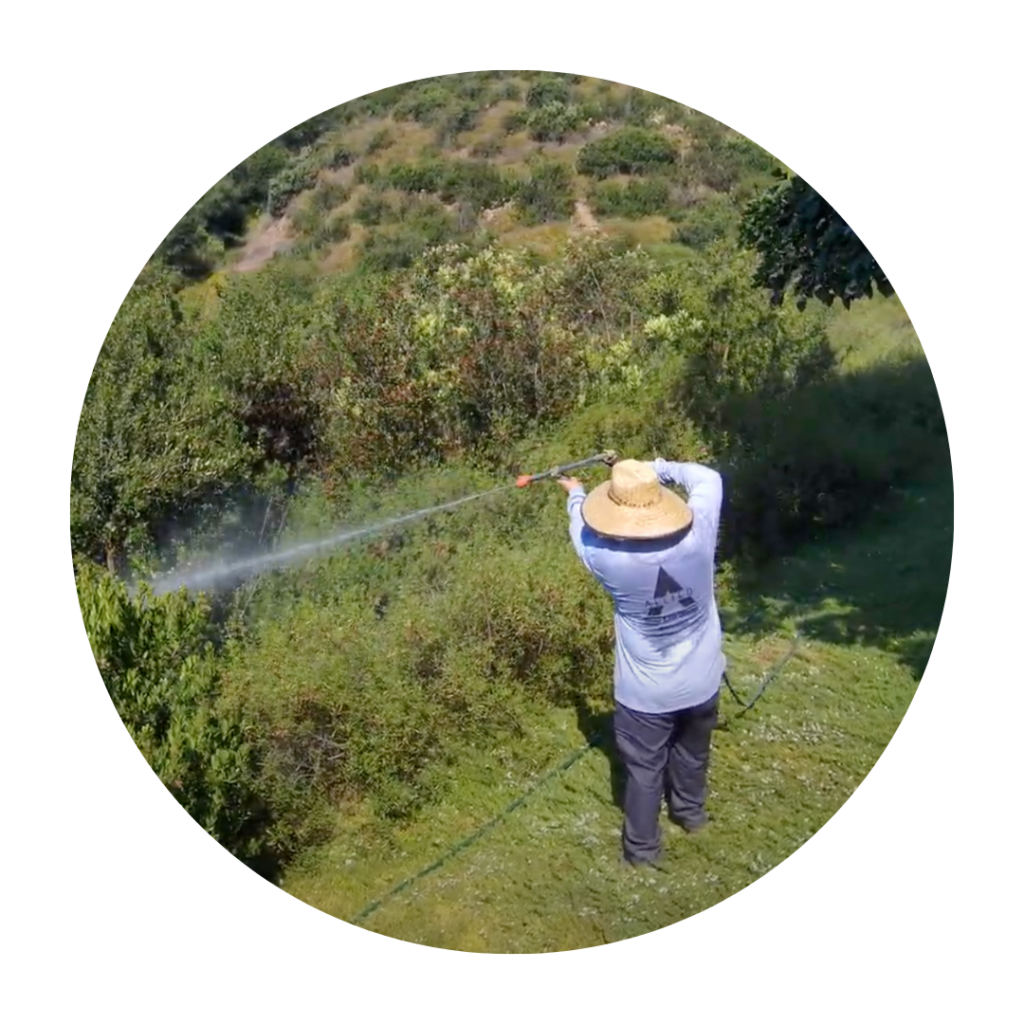Protect your home, business and community
Safer from Wildfires is a ground-up approach to wildfire resilience with three layers of protection — for the structure, the immediate surroundings, and the community. Following these achievable steps can help you save money on your insurance.
Installing 1/16 to 1/8 inch noncombustible, corrosion-resistant metal mesh screens over attic vents can keep wind-blown embers out of your house.
Clearing plants and switching wood chips for stone or crushed granite 5 feet around your home stops fire from getting inside.
With Firewise USA, communities as small as 8 dwelling units or as big as 2,500 can create an action plan and start being safer together.
Class-A fire rated roof – Most roofs qualify including asphalt shingles, concrete, brick, or masonry tiles, and metal shingles or sheets. Wood shake shingles are not Class A fire-resistant rated.The Office of the State Fire Marshal maintains a list of tested and approved materials.
5 foot ember resistant zone, including fencing – Removing greenery and replacing wood chips with stone or decomposed granite 5 feet around your home prevents fire from getting a foot in the door. Replacing wood fencing connecting to your home with metal is critical because it can act like a candle wick leading fire straight to your home.
Ember- and fire-resistant vents – Installing 1/16 to 1/8 inch noncombustible, corrosion-resistant metal mesh screens over exterior vents can keep wind-blown embers out of your house.
Non-combustible 6 inches at the bottom of exterior walls – Having a minimum of 6 vertical inches measured from the ground up and from any attached horizontal surface like a deck can stop embers from accumulating and igniting your walls. Noncombustible materials include brick, stone, fiber-cement siding or concrete.
Enclosed eaves – Installing soffits under your eaves can prevent heat and embers from getting trapped and igniting. When enclosing eaves, non-combustible or ignition resistant materials are recommended.
Class-A fire rated roof – Most roofs qualify including asphalt shingles, concrete, brick, or masonry tiles, and metal shingles or sheets. Wood shake shingles are not Class A fire-resistant rated.The Office of the State Fire Marshal maintains a list of tested and approved materials.
5 foot ember resistant zone, including fencing – Removing greenery and replacing wood chips with stone or decomposed granite 5 feet around your home prevents fire from getting a foot in the door. Replacing wood fencing connecting to your home with metal is critical because it can act like a candle wick leading fire straight to your home.
Ember- and fire-resistant vents – Installing 1/16 to 1/8 inch noncombustible, corrosion-resistant metal mesh screens over exterior vents can keep wind-blown embers out of your house.
Non-combustible 6 inches at the bottom of exterior walls – Having a minimum of 6 vertical inches measured from the ground up and from any attached horizontal surface like a deck can stop embers from accumulating and igniting your walls. Noncombustible materials include brick, stone, fiber-cement siding or concrete.
Enclosed eaves – Installing soffits under your eaves can prevent heat and embers from getting trapped and igniting. When enclosing eaves, non-combustible or ignition resistant materials are recommended.

Every action under Safer from Wildfires will qualify you for an insurance discount.
By doing more, you can save more.